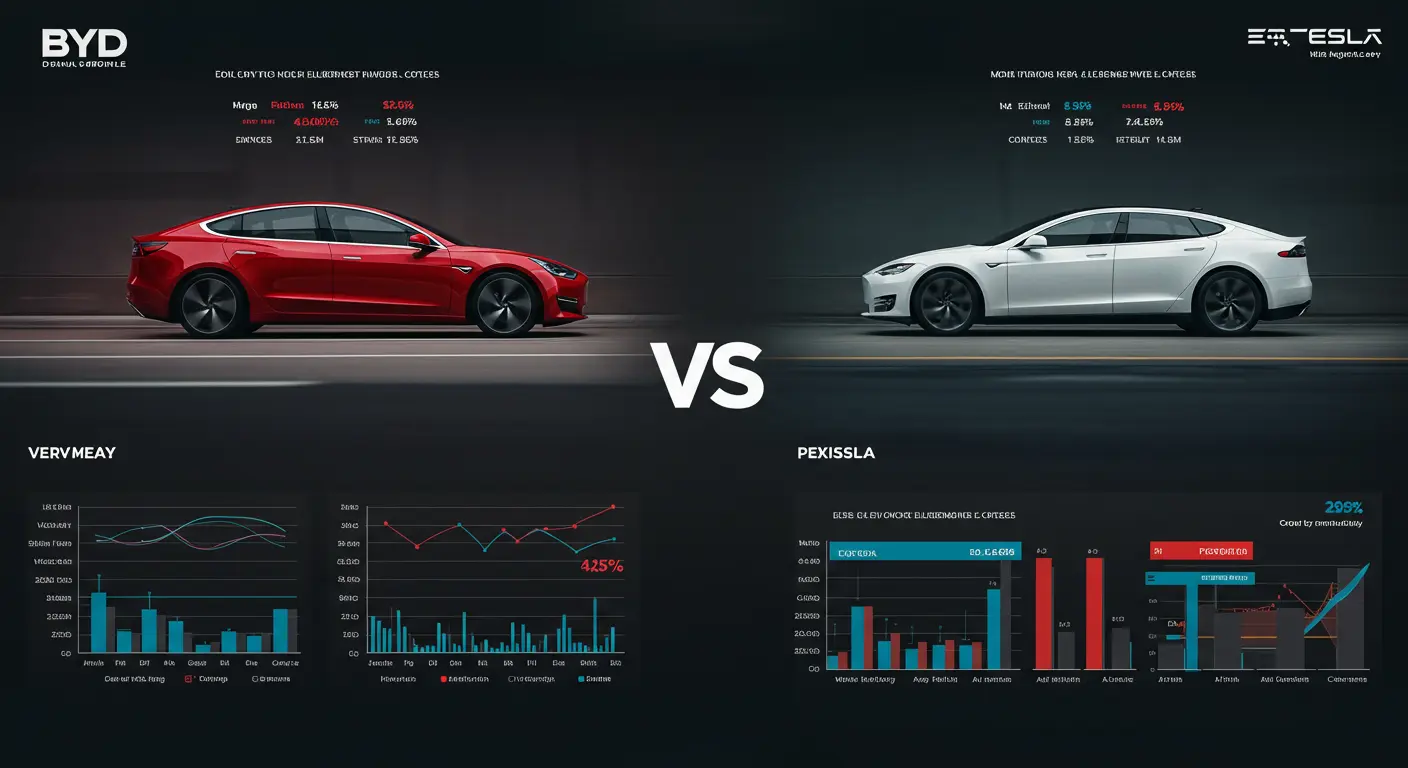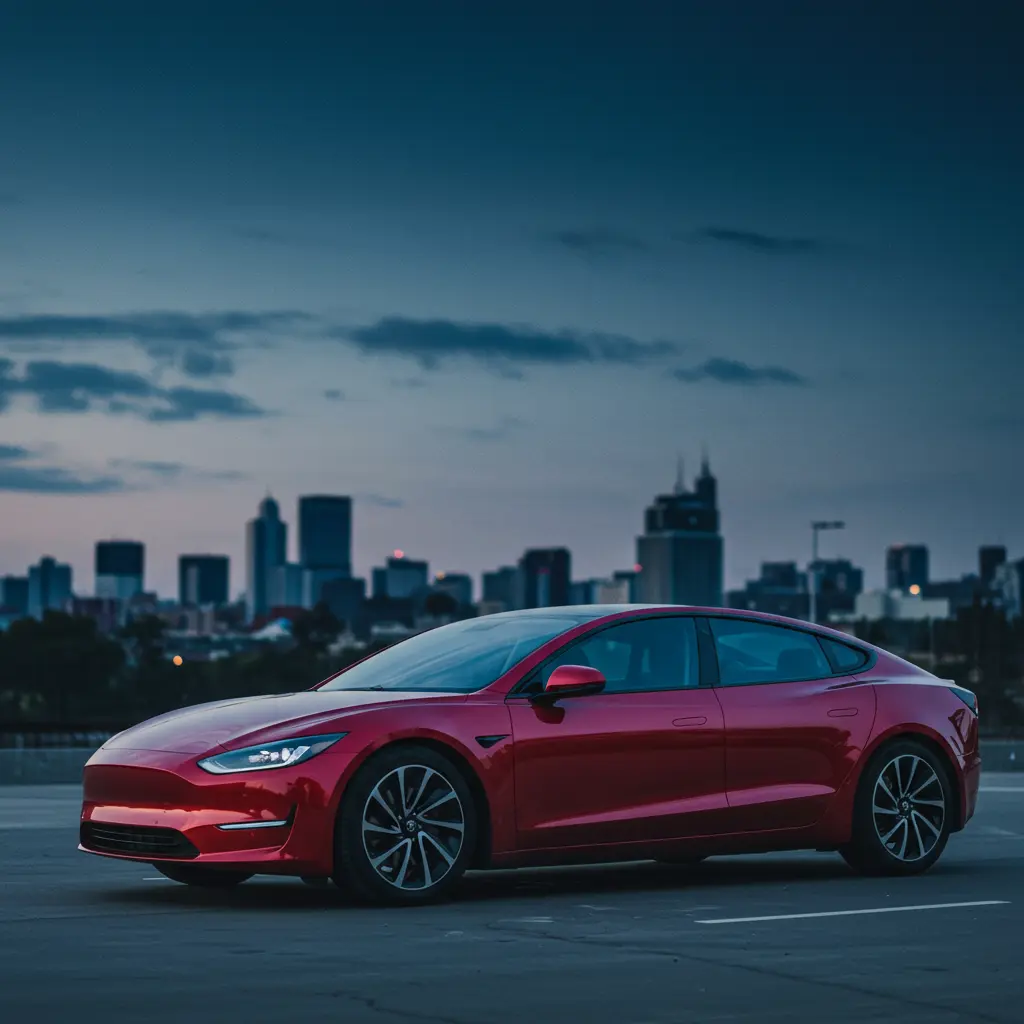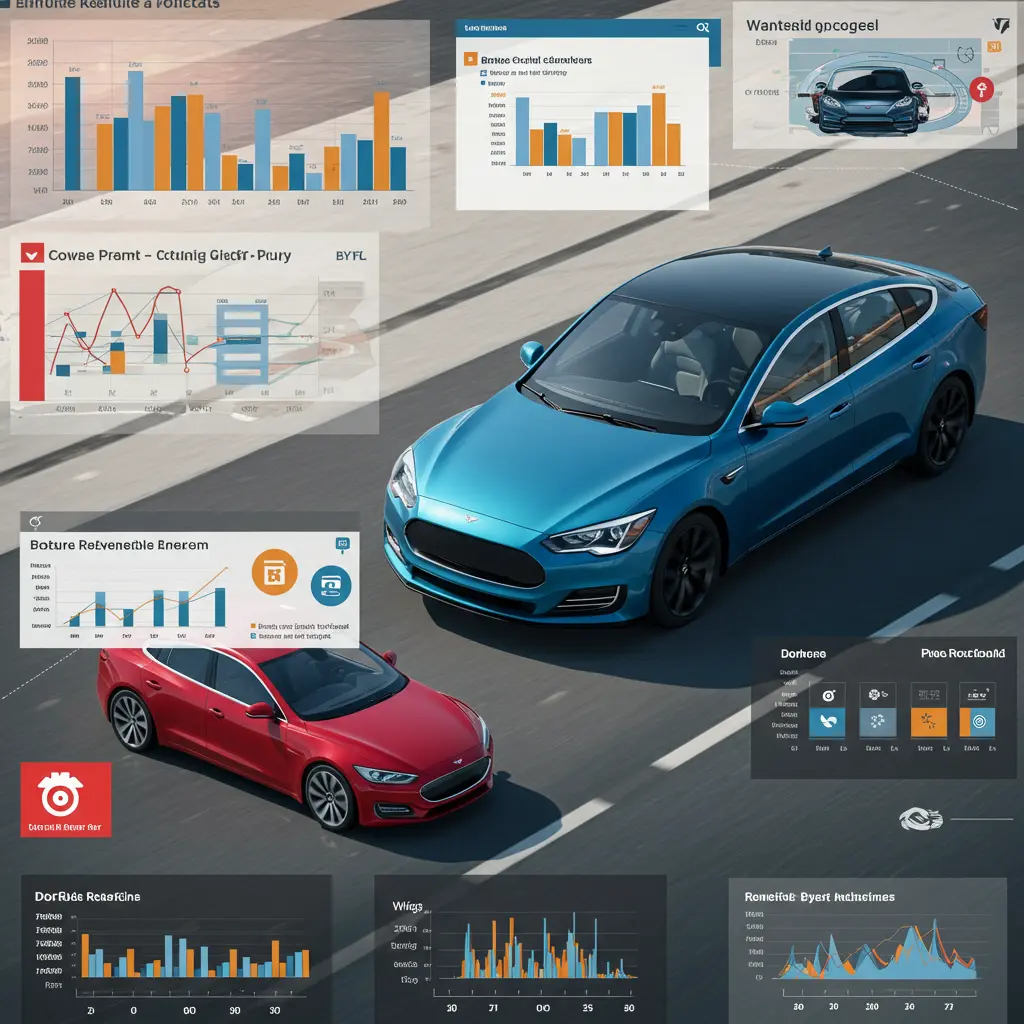The two titans of the electric vehicle (EV) revolution are Tesla and BYD.

These innovative giants are changing global automotive capitalism and are more than just manufacturing marvels. The question now is who benefits more from the seismic move toward electrification not who sells more.
The Titans of EV: A Brief Overview of BYD and Tesla
Elon Musk’s creation, Tesla is a byword for electric luxury, state of the art technology and Silicon Valley flamboyance. Originally a battery-focused company, BYD (short for “Build Your Dreams”) has grown into a total EV powerhouse with one of the most diverse electric fleets in the world.
It originated in China. Despite being geographically and politically separated, their paths suddenly intersect on the battlefield of profit.
Revenue Streams: A Breakdown of EV-Related Income
Tesla earns revenue from direct EV sales, software upgrades like Full Self Driving, energy storage systems and carbon credit trading. Its digital services add recurring income. BYD, on the other hand, generates revenue through electric cars, buses, battery sales and auto components.
While Tesla thrives on high margin tech and branding, BYD benefits from mass production scale and multi sector operations, creating a broader but more traditional income stream.
Global Sales Volume Comparison
BYD surpassed Tesla in global EV sales volume by the end of 2023, driven by its dominance in China and expansion into developing markets. It offers a wide range of affordable electric vehicles, boosting its unit numbers.
Tesla, although selling fewer units, focuses on high end models with global appeal. While BYD wins in volume, Tesla leads in revenue per vehicle, showcasing different strategies in the competitive EV landscape.
Profit Margins: Who Keeps More per Car Sold?
Tesla maintains higher profit margins, often exceeding 20% per vehicle, thanks to premium pricing, streamlined production and lucrative software add ones. In contrast, BYD operates on thinner margins, averaging around 10-15%, due to its focus on affordable, high volume models.
While BYD sells more units,
Tesla earns significantly more per car, leveraging brand value and technology integration to maximize profitability in each transaction.
Who Makes More Money from Electric Vehicles
Battery Manufacturing and In-House Advantage

BYD holds a strong edge with its in house Blade battery production, ensuring cost efficiency, safety and supply chain control. Tesla, while partially producing its own batteries, still relies on partners like Panasonic and CATL.
Complete vertical integration BYD’s reduces dependency and boosts margins. Tesla’s 4680 battery innovation shows promise but BYD currently benefits more from its established, large scale internal battery manufacturing system.
EV Software Ecosystems and Monetization Models
Tesla leads in software monetization through features like Full Self Driving (FSD), over the air updates and premium connectivity subscriptions, creating continuous revenue beyond vehicle sales. Its software driven ecosystem enhances user engagement and margins.
BYD, while improving in infotainment and smart systems, lacks Tesla’s monetization depth. Tesla treats software as a profit engine, whereas BYD still focuses more on hardware, giving Tesla a clear advantage in digital revenue generation.
Government Incentives and Subsidy Dependency
BYD has historically benefited from substantial Chinese government subsidies and EV incentives, which helped fuel its rapid domestic growth. Tesla also utilized incentives, especially in the U.S. and Europe but has gradually reduced reliance as it gained profitability.
While both companies take advantage of government support, BYD remains more dependent on subsidies, whereas Tesla’s business model is becoming increasingly self sustaining and less tied to policy driven incentives.
Supply Chain Control and Vertical Integration
BYD excels in vertical integration, manufacturing its own batteries, chips and key EV components, which lowers costs and ensures supply chain stability. Tesla also follows a vertically integrated model, producing batteries, motors and software in house.
However, BYD’s deeper control across more components gives it an edge in efficiency. Both companies reduce reliance on third parties but BYD’s comprehensive approach offers greater resilience and cost advantages in volatile markets.
Cost of Production and Operational Efficiency

BYD benefits from lower labor costs in China and large scale manufacturing, allowing it to produce EVs at a lower cost. Tesla, on the other hand, emphasizes automation, AI-driven assembly and lean manufacturing at its Giga factories.
While Tesla invests heavily in innovation to boost efficiency, BYD’s traditional cost saving measures and vertical integration give it a strong edge in production economics, especially in the mass market segment.
Regional Market Dominance and Geographic Reach
BYD has established strong regional market dominance, particularly in China, where it consistently leads electric vehicle (EV) sales. Its strategic expansion into Europe, Southeast Asia and Latin America has further strengthened its global footprint.
BYD leverages localized manufacturing, government partnerships and tailored vehicle models to meet regional demands effectively. This wide geographic reach not only reduces dependency on any single market but also positions BYD as a global EV leader capable of scaling production and capturing diverse consumer segments worldwide.
Brand Perception and Premium Pricing Strategy
Tesla cultivated the strong brand perception centered around innovation, luxury and cutting edge technology. This premium image allows the company to implement a higher pricing strategy compared to many competitors.
Consumers often associate Tesla with superior performance, advanced software and environmental consciousness, justifying its elevated price points. While BYD offers competitive EVs at more accessible prices, Tesla’s brand loyalty and aspirational value enable it to maintain premium margins, reinforcing its position as a leader in the high end electric vehicle market.
https://www.idtechex.com/de/research-article/how-to-make-money-out-of-electric-vehicles/3854
Stock Market Performance and Investor Confidence
Tesla’s stock market performance has been a key indicator of strong investor confidence, driven by consistent innovation, global expansion and leadership in the EV space. Its high valuation reflects long term growth expectations and belief in Elon Musk’s vision. BYD, backed by major investors like Warren Buffett has also shown steady growth, particularly in the Asian markets.
As BYD expands globally, investor interest continues to rise. Both companies attract attention for their technological edge and potential in the evolving clean energy sector.
Future Revenue Forecasts and Strategic Roadmaps

Both Tesla and BYD have ambitious strategic roadmaps aimed at driving future revenue growth. Tesla plans to expand production capacity, launch more affordable models and enhance its energy and autonomous driving segments. BYD is focused on scaling exports, increasing battery production and diversifying into commercial EVs. Analysts forecast strong revenue growth for both, driven by rising global EV demand. Their forward looking strategies highlight innovation, vertical integration and sustainability as core pillars shaping their long term financial trajectories and market leadership.
Conclusion:
Tesla leads the charge with a diversified revenue model, encompassing vehicle sales, energy storage solutions and a rapidly growing software service market. Meanwhile, BYD is making significant strides with its vast product portfolio that spans passenger vehicles, commercial vehicles and energy storage systems, creating a broad revenue base.
Tesla’s development of its own battery technology with the introduction of the 4680 cell, ensures a competitive edge in reducing costs and improving efficiency. On the other hand, BYD’s vertically integrated supply chain allows it to control the entire battery production process, giving it an advantage in cost control and independence.
Q: What makes BYD and Tesla the leaders in the EV industry?
A: Both BYD and Tesla are leading the EV market due to their pioneering technologies, large scale production capabilities, and strong brand recognition. Tesla is known for its innovation, high-performance EVs and advanced software, while BYD excels in affordable EVs with a wide product range and deep integration of manufacturing processes.
Q: Who has higher profit margins: BYD or Tesla?
A: Tesla generally enjoys higher profit margins per vehicle due to its premium pricing, advanced technology and brand appeal. BYD while offering more affordable EV options, has a competitive advantage in volume sales and cost efficiency, allowing it to maintain lower margins but higher overall profits from mass production.
Q: How do BYD and Tesla manage battery production?
A: Tesla manufactures its own advanced batteries, including the 4680 cells, which helps reduce costs and increase efficiency. BYD takes a more integrated approach, producing its own batteries in-house through its BYD Battery Co., ensuring control over quality and cost.